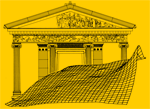|
QUOTATIONS
C.R. Orton, P.A. Tyers, Statistical analysis of ceramic assemblages, «Archeologia e Calcolatori» 1, 1990, 81.
By the quantification of a ceramic assemblage we mean the giving to it of a value which expresses the 'amount' of material in it. Such a
value we here call a measure (of quantity). We suppose that, for a given investigation, the assemblage can be divided into subsets, here
called types, by an exclusive and exhaustive classification, i.e. every piece of ceramic material belongs to one, and only one, type.
This is not a restrictive requirement as it is permissible to have an 'unclassified' or 'unknown' type.
Different aims may require different definitions of type, e.g. shape types (forms), fabric types, decorative types, or some combination of two or more of these.
Quantification consists of assigning a measure to each type in the assemblage, i.e. saying 'how much' of each type there is.
Why should archaeologists want to do this? There seem to be three main reasons - for chronological, spatial or functional/social reasons.
|



